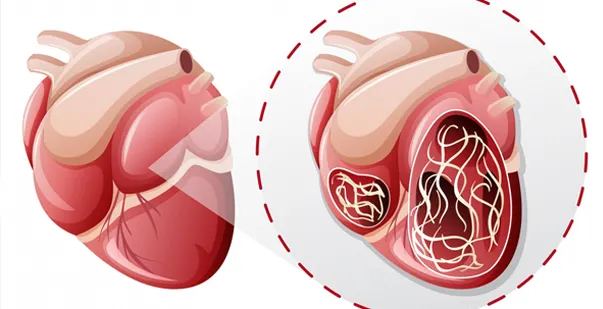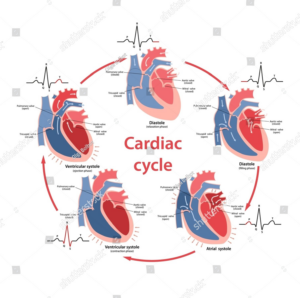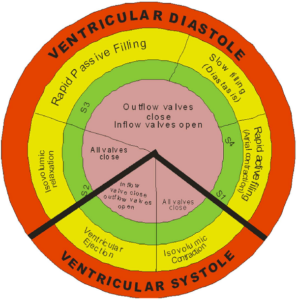Table of Contents:
- Introduction
- What is Human Heart Anatomy
- What is a Cardiac Cycle?
- Phases of Cardiac Cycle
- Duration of Cardiac Cycle
- Cardiac Cycle: Harness your Heart Health
Introduction
The cardiac cycle is the rhythmic beating of your heart, a remarkable process that fuels life. Every day, your heart beats about 100,000 times and pumps nearly 7,500 liters of blood through your body. With each beat, it goes through a series of well-coordinated events to maintain blood flow. The cardiac cycle involves all sequence of events when the heart beats. Thus, being aware of the cardiac cycle will help you comprehend how heart operations keep our body supplied with oxygen and nutrients.
Let us explain the cardiac cycle, breaking down its stages with detailed insights into the phases of your heart’s rhythmic cycle.
Master ACLS Now
Get ACLS certified with confidence
What Is Human Heart Anatomy?
To define the cardiac cycle, you have to understand the human heart anatomy. The human heart is a muscular organ about the size of your fist. It is located slightly left of the chest. The heart contains four chambers: two upper chambers called atria and two lower chambers called ventricles. Each chamber performs a specific function, working in harmony to maintain a steady flow of blood. This anatomical structure of the heart is to perform the following functions in a single cardiac cycle:
- Right Atrium: Right atrium receives deoxygenated blood from the body through veins like the superior and inferior vena cava.
- Right Ventricle: The right ventricle pumps this deoxygenated blood to the lungs through the pulmonary artery for oxygenation.
- Left Atrium: This is the upper left chamber that receives oxygen-rich blood from the lungs via the pulmonary veins.
- Left Ventricle: This is the strongest chamber that pumps oxygenated blood to the entire body through the aorta.
What is a Cardiac Cycle?
The sequence of events that occur during one complete heartbeat, including the contraction and relaxation of the heart muscles, define the cardiac cycle. It has two primary components: systole, when the heart chambers expel blood or contract, and diastole when the heart’s pumping chambers fill with blood. This cycle maintains optimal blood circulation and improves the functioning of the cardiovascular system. Therefore, issues with any stage of the cardiac cycle can result in several cardiac diseases.
Read More: An Overview of the Cardiac Cycle
Read More: An Overview of the Cardiac Cycle
Phases of Cardiac Cycle
The cardiac cycle steps comprise diastole and systole. Diastole refers to the process of ventricular filling, while systole pertains to ventricular contraction and ejection. Both phases happen on the right and left sides of the heart, though the pressure during these phases is distinct. Let us break down the 7 Phases of the cardiac cycle below.
Read More: Phases of Cardiac Cycle
-
Atrial Systole
Atrial systole is one of the important phases of the cardiac cycle when the atria (upper heart chambers) contract. This contraction is stimulated by electrical signals from the sinoatrial (SA) node, which acts as the heart’s natural pacemaker. This impulse moves through the walls of the atria, making them contract and pushing blood into the ventricles (lower chambers of the heart). The sub-phases involved in this step are:
-
Atrioventricular (AV) Valves Opening
The AV valves include the tricuspid (on the right side) and the mitral valve (on the left). As the atria squeeze, they push blood into the ventricles with the resulting pressure. In this manner, these valves do not allow backflow and direct blood in only one direction into the ventricles from the atria.
-
Completion of Ventricular Filling
During atrial systole, the atria help to push the last 20-30% of blood into the ventricles. The other 70-80% of the ventricles fill passively during diastole when the heart is relaxed. This ensures the ventricles are full and ready to pump blood.
-
Atrial Kick
The blood pumped into the ventricles during atrial contraction is called an atrial kick, which ensures optimal blood flow. By the end of this phase, the ventricles will be filled to maximum capacity, preparing for the cardiac cycle phases.
-
Ventricular Systole
After atrial systole, the cardiac cycle continues with ventricular systole. In this phase, both the right and left ventricles begin to contract simultaneously. The right ventricle pushes blood to the lungs, while the left ventricle pushes oxygenated blood throughout the body. This phase is then categorized into the isovolumetric contraction and the ejection phase.
-
Isovolumetric Contraction
This initial step in the ventricular systole marks the beginning of ventricular contraction. Once this phase begins, the heart valves close, which increases the pressure within the chambers. The excess buildup of pressure opens the semilunar valves, including the pulmonary and aortic valves.
-
Ejection Phase
When the ventricular pressure exceeds that of the pulmonary artery and aorta, the semilunar valves open to pump blood out of the heart. The right side pumps blood into the pulmonary artery, directing it to the lungs for oxygenation. In contrast, the left side pumps blood into the aorta to supply oxygen to the body.
-
Semilunar Valves Opening
The pulmonary and aortic semilunar valves open as pressure rises, directing blood flow in one direction out of the ventricles. This phase creates the pumping mechanism of the heart, where oxygen-depleted blood is sent to the lungs for re-oxygenation.
-
Diastole Phase
After the heart has contracted, it goes into early ventricular diastole, which is a period of relaxation. The pressure in the ventricles falls below that of the arteries and the semilunar valves close. This stage allows blood to flow into the atria to prepare for the next filling cycle.
-
Closing of Semilunar Valves
When the pressure in the ventricles falls below the pressure in the aorta and pulmonary artery, the semilunar valves (aortic and pulmonary) close. This prevents blood from flowing back into the heart chambers and maintains one-way blood flow.
-
Relaxation of Ventricles
When the ventricles relax, the AV valves are closed, and the ventricles take a little rest. No blood flows into the ventricles at this time. This phase prepares the heart muscles for the next phase of squeezing and pushing out blood.
-
Late Ventricular Diastole
As the last phase of the cardiac cycle, both the atria and ventricles are relaxed. The ventricular filling process occurs when blood flows from the atria into the ventricles. This happens in two stages: passive filling and atrial systole. Most of the ventricular filling occurs passively when the AV valves open, which allows blood to flow into the ventricles without atrial contraction.
Read More: A Complete Guide to Cardiac Conduction System
Duration of Cardiac Cycle
In a normal individual, a heartbeat typically averages 72 beats per minute. Hence, one cardiac cycle lasts approximately 0.8 seconds and includes both the systole and diastole phases. While the cardiac cycle timeframe can vary among individuals, it indicates the rhythmic nature of the heart’s pumping action.
The duration of the cardiac cycle improves your heart’s efficiency and overall health. Irregularities in the cycle time may indicate potential issues with the heart’s ability to pump effectively. Here’s an overview of the duration of different cardiac cycle stages:
- Atrial Systole: Approximately 0.1 seconds
- Ventricular Systole: Approximately 0.3 seconds
- Atrial Diastole: Approximately 0.7 seconds
- Ventricular Diastole: Approximately 0.5 seconds
Read More: ECG Patterns You Must Know To Acute Myocardial Infarction
Cardiac Cycle: Harness the Heart Health!
The cardiac cycle is a complex yet essential process that regulates the flow of blood through your heart. Each heartbeat ensures oxygen and nutrients are efficiently delivered to your tissues through well-coordinated heart activity. With an understanding of the different phases of the cardiac cycle, you will comprehend heart function and identify various disorders. You can also consider enrolling in advanced cardiac life support (ACLS) training. You will be better able to deal with any emergency arising due to issues with the cardiac cycle.
References
- What are the stages of the cardiac cycle? | Medanta
- Cardiac Cycle | Anatomy and Physiology II
- The stages of the cardiac cycle
- Physiology, Cardiac Cycle – StatPearls – NCBI Bookshelf
- What are the different phases of the Cardiac Cycle? | Artemis Cardiac Care
- Cardiac Cycle – an overview | ScienceDirect Topics









